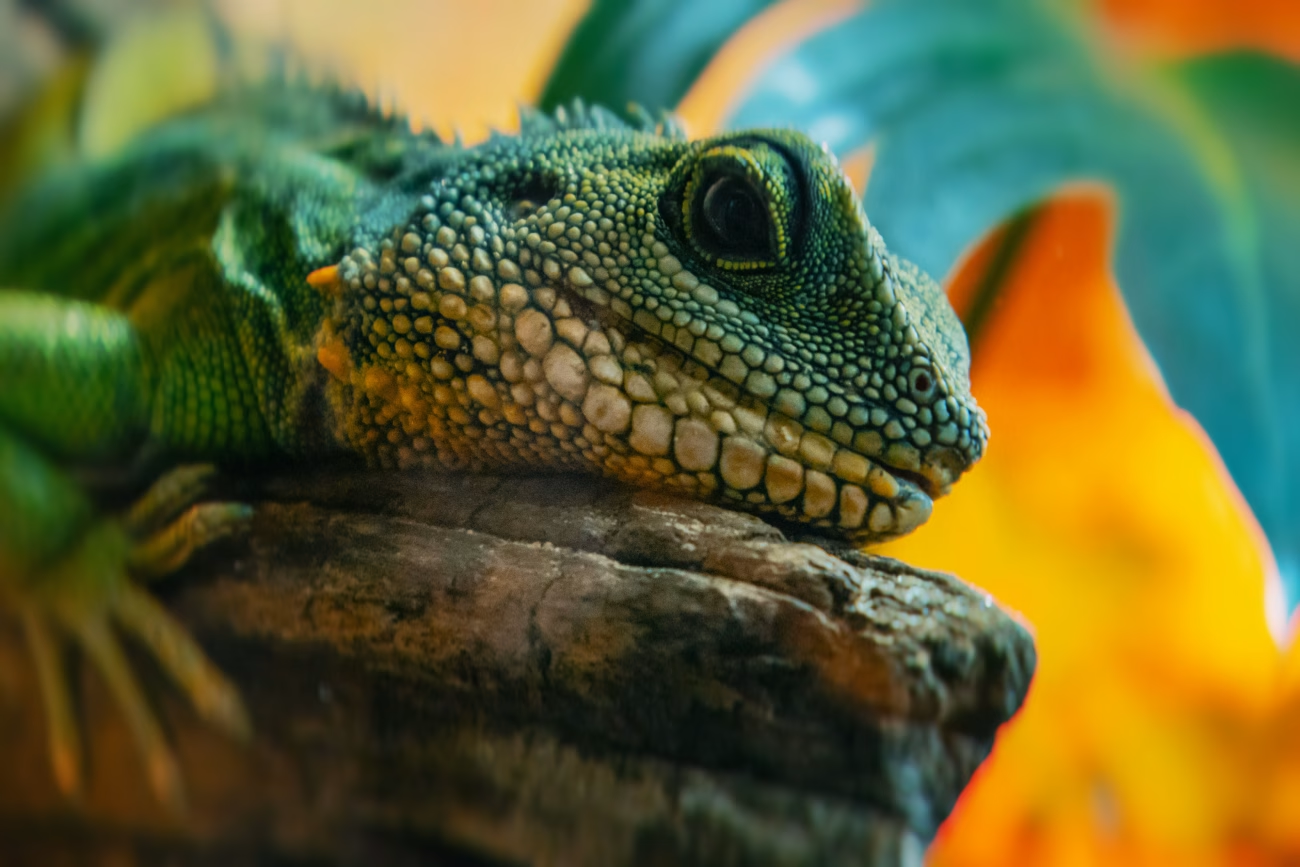The Hidden Wild Inside Your Lizard’s Heart
When you watch your pet lizard bask on a branch or slip into the shade of a leaf, you are seeing instincts shaped by millions of years. Sadly, many lizards spend their lives in bare glass enclosures with little more than a heat lamp and a rock. That may keep them alive, but it doesn’t give them comfort or stimulation.
A mini jungle changes everything. It creates an environment where your lizard can climb, hide, explore, and feel secure. The best part? You don’t need exotic tools or expensive equipment. With a little creativity, you can transform a plain tank into a lush, living world.
Why Lizards Need a Jungle at Home
Lizards are not ornaments for display. They are living animals that respond to their surroundings. In nature, they weave through branches, hide under leaves, and rest in shaded corners. A sterile terrarium removes those opportunities. Over time, this can lead to stress and repetitive behavior.
A jungle setup does the opposite. It provides variety and choice. When a lizard can climb, burrow, or retreat into cover, it feels safe. Even reptiles born in captivity still carry the same wild instincts. A small piece of jungle helps them express those instincts naturally.
Creating the Right Base Environment
Every good enclosure starts with space, heat, and light. The size of the terrarium depends on the species, but larger spaces always give better results. More room allows for climbing structures, plants, and multiple hiding spots.
Heat and UV light are vital for reptile health. Your enclosure must include a basking spot for warmth and shaded areas for cooling down. UVB lighting is essential for species that need it to process calcium and avoid disease. Without correct lighting, even the most beautiful jungle will fail.
Bringing the Jungle Alive with Plants
Plants turn a plain enclosure into a thriving ecosystem. They provide climbing paths, cover, and humidity. Both live and artificial plants can work, but each has its benefits.
Live plants, such as pothos, ferns, or snake plants, improve air quality and hold moisture. They also look more natural. If you use live plants, make sure the soil and fertilizers are reptile-safe. Artificial plants need little care and still give your lizard the privacy it craves. A mix of the two usually works best.
Picture your lizard weaving between broad leaves, hiding in shade, or basking on a branch above.
Branches, Rocks, and Hiding Places
A jungle without structure isn’t a jungle at all. Branches give lizards a vertical playground. Rocks and bark provide the shaded retreats they need. You can buy reptile-safe wood in stores or prepare natural branches at home by cleaning them thoroughly.
Caves and hollow logs are more than ornaments. They are essential for security. A lizard that cannot hide feels exposed. A lizard that can vanish into foliage or stone feels safe enough to explore.
The Ground Layer: A Living Floor
The ground layer ties the whole enclosure together. Coconut fiber, reptile-safe soil, and bark chips all work well for tropical species. They keep humidity stable and look natural. For desert lizards, a soil-and-sand mix may be more suitable, though avoid pure sand since it can cause health problems.
Adding dried leaves on top makes the terrarium look and feel like a real forest floor. Lizards may dig, explore, or burrow beneath the leaf litter. This simple addition brings the enclosure to life.
Water and Humidity: The Breath of the Jungle
Moisture keeps a jungle alive. Humidity levels influence skin health, shedding, and comfort. Daily misting helps, and live plants make the job easier. Even a shallow water dish, placed among greenery, can mimic a natural pool.
Some keepers add small waterfalls or dripping systems for species that prefer moving water. Match the humidity to your lizard’s natural environment. For species-specific guidance, see the Reptile Centre UK care sheets.
Watching Instincts Come Alive
The reward of building a mini jungle is watching your lizard change. Owners often notice brighter colors, more climbing, and more exploration. These behaviors show comfort and well-being.
Instead of a reptile that sits still, you will have an animal that moves with energy and purpose. The enclosure is no longer a cage. It becomes a stage for natural instincts.
A Living Connection to the Wild
A mini jungle is more than decoration. It is a gift of respect. It tells your lizard that it belongs to something bigger than glass and walls. Each branch, rock, and leaf reconnects it to an ancient heritage.
In your home, a fragment of the wild lives again. And as you watch your lizard bask in filtered light or slip into the shadows of broad leaves, you will see more than a pet. You will see a living connection to the wild.
Related Post:


